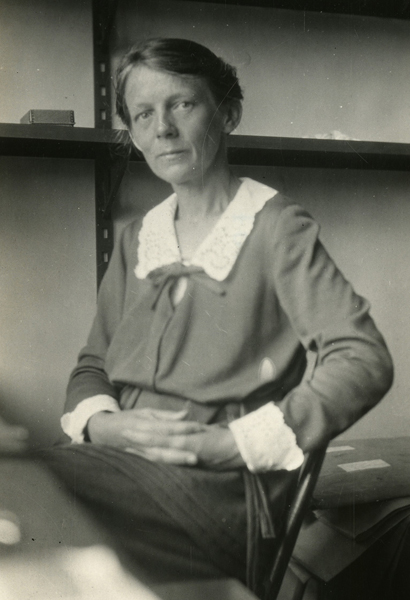

Birth: November 9, 1881
Death: July 20, 1970
Specialty: Biology
Major Contributions:
Considered first to grow mammalian tissue in vitro
Discovered the Lewis Lung carcinoma
Established the link between monocytes and macrophages
Image: Smithsonian Institution Archives
Margaret Reed Lewis earned her bachelor’s degree in biology from Goucher College in 1901 and spent the next few years studying for a graduate degree. She never quite achieved that goal but made great strides in our understanding of cells and tissues during her lifetime.
In recognition of her expertise, she was offered many lecturer positions including in physiology at the New York Medical College for Women and zoology at Barnard College. While teaching at both schools she was also a lab assistant at Columbia University where she would be an instructor in biology a few years later.
In 1908 while working at a lab in Berlin she is credited with being the first person to grow mammalian cells in vitro using a salt solution she developed herself in order to create the correct conditions for growth.
In 1910 she married fellow cell biologist Warren Lewis. They would work collaboratively on and off for the rest of her career. During the two years after their marriage the pair expanded on her previous work by focusing on the development of media in which different kinds of cells could be grown. As cell biologists it was important that the media they were developing be clear in order to see the cell structure and they created the Locke-Lewis solution with which they could grow cells in one drop on the underside of a glass.
Margaret returned to full-time lab research in 1915, hired by the Carnegie Institute’s Department of Embryology where she would be a research associate until 1946. During her time at Carnegie, she examined the working of monocytes, a type of white blood cell, and was able to show that these cells could transform themselves into macrophages, a type of cell that can eat and destroy microorganisms in the blood stream.
In 1946 she was elected to the Wister Institute of Anatomy and Biology where in 1951 she discovered a type of cancer cell she named the Lewis lung carcinoma. In recognition of her work, she was named an honorary lifetime member of the Tissue Culture Society.
Written by Angela Goad
Sources:
Wikipedia: Margaret Reed Lewis
Women In Science Day 2021 – Margaret Reed Lewis
Wikipedia: Lewis lung carcinoma
The Biographical Dictionary of Women in Science: Pioneering Lives
Encyclopedia of World Scientists
See Also:
Margaret Reed Lewis microscope
Margaret Reed Lewis facts for kids
